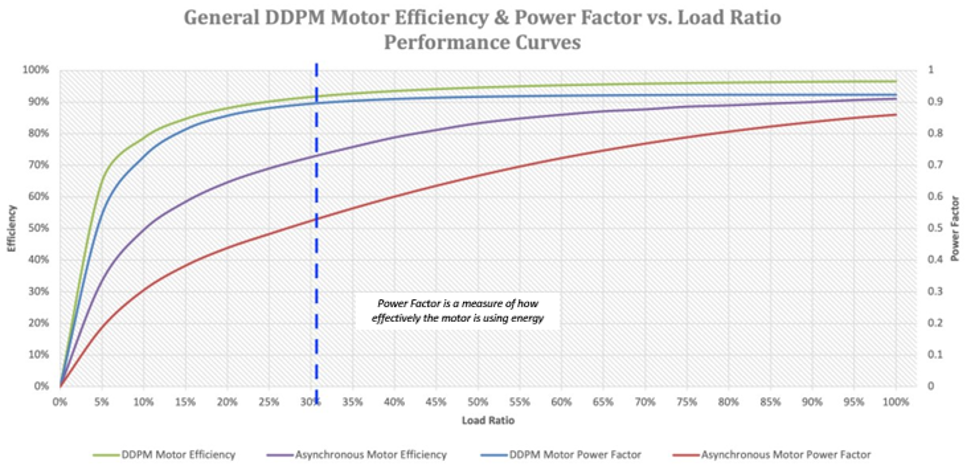
Vice President, Digital Solutions
Weatherford

Vice President, Artificial Lift Systems
Weatherford
Now, more than ever, to remain profitable, operators are looking for new and innovative technologies to reduce energy consumption, lower carbon footprint, deliver OPEX savings, and reach new levels of maximized production while operating their assets with fewer resources than ever before. These performance needs are heightened by the ever-expanding environmental regulations, policies, and requirements to reduce greenhouse gas (GHG) emissions.
Permanent magnet motors (PMM), in particular, and emerging digital technologies in general are innovative and adaptive technologies that can help address those needs.
Q: What are the major differences between a permanent magnet motor and a three-phase induction motor?
A: Kevin Leslie: A PMM is similar in construction to a three-phase induction motor (IM) except it replaces the IM rotor electromagnets with rare-earth magnets which are embedded onto the outside of the rotor. The rare-earth magnets generate a permanent magnetic field as opposed to the IM which relies on the stator rotating electromagnetic field to induce the electromagnetic field in the IM rotor. It is important to note that approximately 25 to 35% of the motor full-load-amp rating is required to generate the motor magnetizing current. The PMM has two-to-three times the power density of an induction motor, and by eliminating the IM motor rotor electromagnets, the PMM is a significantly lighter and more compact design.
Q: PMMs are marketed as reliable energy-saving technology. Why is the PMM more energy efficient and reliable?
A: Kevin Leslie: As mentioned, the PMM eliminates the electromagnet rotor and the associated magnetized current and its energy losses. By design, it is not uncommon for a PMM to have a motor efficiency and power factor of 98% and 0.99 respectively over the motor-load ratio, resulting in energy savings and a carbon-footprint reduction of 15 to 30% over an IM. This makes PMMs perfect for applications with large variations in the dynamic load or operating at less than 90% motor-load ratio.
The PMM rotor eliminates the electromagnet coil and its brushes, which are known to fail and become a major maintenance component of IMs. PMMs generate significantly less heat, improving reliability and operational life while requiring fewer maintenance trips for relubrication. As a result, the expected operational life of a PMM is 20 years as compared to 14 years for an IM.
Q: Where do PMMs fit in with Artificial Lift System (ALS)?
A: Kevin Leslie: PMMs are ideally suited for Maximizer® surface-pumping units and Rotaflex® long-stroke pumping units. For reciprocating rod-lift systems, progressing-cavity pumping systems, and hydraulic-fluid power systems, their motors are selected based on containing reserve capacity to accommodate their high starting torques and elevated load conditions, like when producing solids. Consequently, it is not unusual for their initial motor-load ratio to be approximately 80% or less. As fluid production and hydraulic horsepower decline over time, so does the motor load ratio. Where the IM efficiency and power factor fall significantly with a declining motor-load ratio, the PMM maintains the motor efficiency and power factor resulting in energy savings and GHG-emission reductions of 15 to 30 percent.
Because PMMs directly drive the load, the standard belt-drive transmission system is not required. This provides up to an additional 3% energy savings. It also eliminates downtime due to belt tensioning, belt replacement and alignment, and sheave changes, while lowering hazardous exposures related to rotating equipment.

Q: Are PMMs adaptable to other energy-saving technologies and products, enhancing their ALS efficiency and production value?
A: Manoj Nimbalkar: PMMs require a variable-speed drive (VSD) at the wellsite to start. VSDs integrated with an intelligent controller, such as ForeSite® EDGE, can autonomously optimize the operation of ALS equipment to improve run life and maximize production from the well. ForeSite EDGE also collects and stores real-time performance data of PMMs from the VSDs. This data is available for transmission via telemetry to SCADA systems such as CygNet®, making it available to operators or engineers to visualize on their devices. Engineers can also analyze and optimize well performance using a production-optimization platform such as ForeSite, which combines real-time data from SCADA with physics-based models.

